A good solution or a mistake: should you install bimetallic heating radiators with bottom connection?
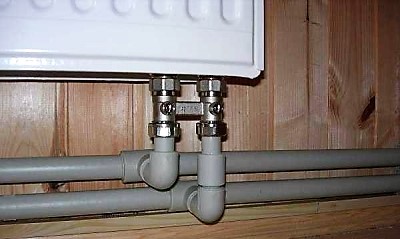
The correct choice of heating equipment and its connection method is a guarantee of comfort and an important condition for aesthetics in any room.
Until recently The usual methods of connecting heating devices were considered standard and diagonal connection. Hot water is supplied to the upper part of the radiator, and cooled water comes out through the lower pipe. It is difficult to close it with this method of supply.
Bimetallic radiator with bottom connection
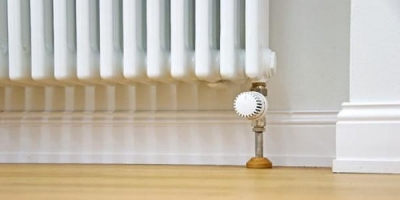
Today, bottom connection of batteries is becoming fashionable as an alternative.
If you are the owner of a private house and want the heating system blended organically into the interior your home, then this is a win-win option. Pipes in this case conveniently hidden under the floor covering, without attracting undue attention.
Advantages
Variety and wide range The variety of heating radiators on offer sometimes baffles buyers, and choosing the option that suits their home is not so easy.
Cast iron radiators are being replaced by more attractive steel and aluminum sections, as well as their hybrid version - bimetallic radiators, which equipped with a block specially adapted for bottom connection pipes. Will installь them on their own it won't be difficult, and it also makes the system much easier to maintain, since when the heating is turned off in the summer there is no need to drain the water.
Bimetallic radiators have quite a lot of high heat transfer, and its maximum value is achieved with the bottom supply of hot water.
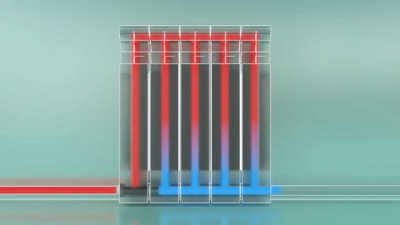
This is possible due to the design feature of the device, which promotes the formation of heat flows, based on convection and radiation.
Hot water heats up quickly lower part batteries, and upper part, along with the incoming coolant, warmed up by warm air currents.
Steel core forms the basis of the device. It provides strength the entire structure, resistance to high water pressure, reaching up to 35 atmospheres, as well as increased speed of passage of the coolant. Unlike aluminum, steel is good resists corrosion processes, can be used in environments with high water hardness. Increased heat transfer is achieved by attaching aluminum fins to the core.
Important! Aluminum is much superior to cast iron in terms of convective heating. Heat transfer intensity of aluminum makes up 60%, at the time when cast iron batteries provide only 20% due to convection.
Other advantages of bimetallic radiators include the presence of complex system of ribsEach plate is equipped with a connecting nipple on both sides, which allows them to be regrouped if necessary, changing places, and also, by adding additional sections, easily increasing their number.
Ease of installation Bimetallic radiators with bottom connection can also be attributed to the advantages. Since the pipes are connected directly without complex bends, hot water passes unhindered, ensuring rapid heating of the battery.
A significant factor is the relative low installation cost.
Flaws
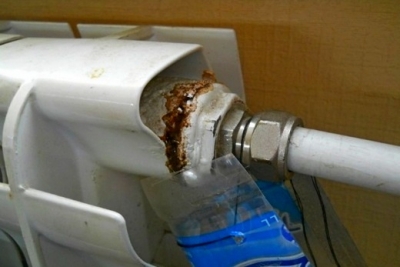
Bimetallic radiators are not without their drawbacks. This mainly consists of high cost device. But this drawback is compensated by the durability of the product.
Some problems arise from improper use. The steel core may be subject to rust, if you drain the water in the summer, and also when using antifreeze.
With the battery connected at the bottom and the pipes hidden under the floor covering problems may arise in case of an accidentIn this case, the floor will have to be dismantled, which will entail additional losses. Efficiency several heating devices decreases when using multi-section batteries due to uneven or incomplete heating of the sections. The solution to the problem is to install a flow extender. There is an opinion that the lower connection reduces heat transfer, but this can be easily changed with the right choice of equipment.
Types of bottom connections for heating devices
When choosing a lower connection to the heating system, you need to take into account the characteristics of the batteries themselves. Exists 3 types heating devices suitable for this purpose:
- Bimetallic radiators, equipped with sections with convection platesThey are universal because they have 4 connection points for pipes that can be connected in different ways. In such batteries, heat losses are insignificant. The power drop in them is eliminated by adjusting the thermostat.
- Panel batteries - smooth and ribbed. They do not have the possibility of diagonal and top connection. For such systems, the supply of devices and connection elements is carried out separately.
- Batteries with steel pipes have high heat output. They provide the possibility of one-sided connection of pipes.
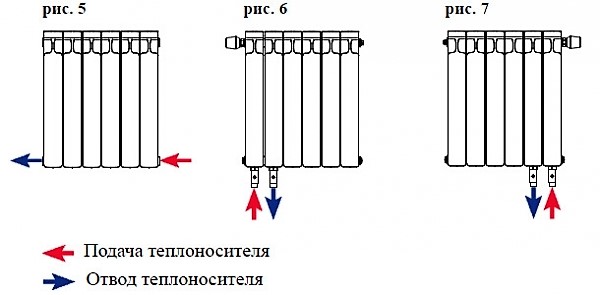
Photo 1. Three diagrams of the bottom connection of heating radiators: one on both sides and two on both sides.
Distinguish two types lower connection of the heating system: one-sided and versatile. In the first variant, the pipes are on one side of the battery. The coolant circulation scheme can be implemented by feeding hot water to the upper part of the battery, and the outlet is through the lower plug, designed to drain cold water. Some types of devices allow you to place both pipes in the lower part.
Versatile connecting batteries is also called "saddle". Here the supply and outlet of the coolant is carried out from different sides of the radiator. The peculiarity of such a system is the minimum distance between the supply and outlet pipes. The circulation of the coolant occurs in different directions. This connection method is ideal for an individual heating system.
Rules and features of installation
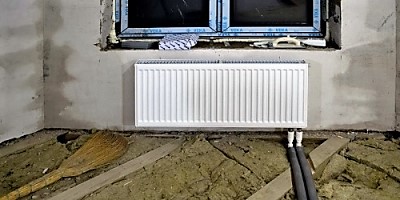
Correct installation of heating devices in compliance with all installation requirements ensures maximum heat transfer.
The first thing that is done is marking the mounting location batteries. If it is installed too low, all the heat goes to heating the floor.
It is also not recommended to place radiators close to the wall and window sill. Optimal distances can be expressed by the following indicators: 6-7 cm from the floor, 10 cm from the window sill, 3 to 5 cm from the wall. With these parameters, better convection of heat flows is ensured.
Important! To prevent the formation of air chambers on the upper part of the heat exchanger, it is advisable to install a battery with some inclination.
When connecting the system, you need to use one side of the device follow factory markings, so as not to confuse the supply and discharge pipes. It is necessary to pay attention to the presence thermostatic insertThe thermostat will allow you to regulate the heat in the room when the outside air temperature changes.
Useful video
Check out the video showing the installation of bottom connection radiators.
As an afterword
If you are the owner of a private house, then the choice of one or another type of connection depends on your preferences. Bottom connection of heating devices does not surpass other types in technical parameters. This type of connection to the heating system should only be chosen if it is dictated by design requirements interior.






Comments
And such a system heats much better, and the radiators heat up quickly and the heat from them goes well. And gas consumption has decreased noticeably, but in this, probably, not only the piping system but also the boiler itself played a big role. My friend has central heating, so he also has this lower piping and batteries, and they also heat well, he says it has even become better, for example, to bleed off the trapped air.
These radiators have a bottom connection option. Many say that this option is not economical, and that the batteries do not heat well. But over 7 years I have become convinced that these radiators work just fine even with a bottom connection, they heat up very quickly and give off heat well. After starting the boiler, when I checked how the batteries were heating up, they heated up on the second floor even faster than I went up there. In addition to the fact that with such a piping fewer pipes are visible and the system looks more aesthetically pleasing, it also has the advantage that there is no second return pipe and when the water comes back to the boiler, it cools down less, which means less gas will be spent to heat the water in the system.
We bought Titan (Marek) 500/96, installed it last year. What can I say - we are happy! We were warned that the radiators should not fail, they need to be washed correctly. If the batteries are not very dirty, then they can be washed with ordinary water with the addition of citric acid (25 grams per liter of water) or ordinary table vinegar (1 tablespoon per liter). The water during washing should be as hot as possible.